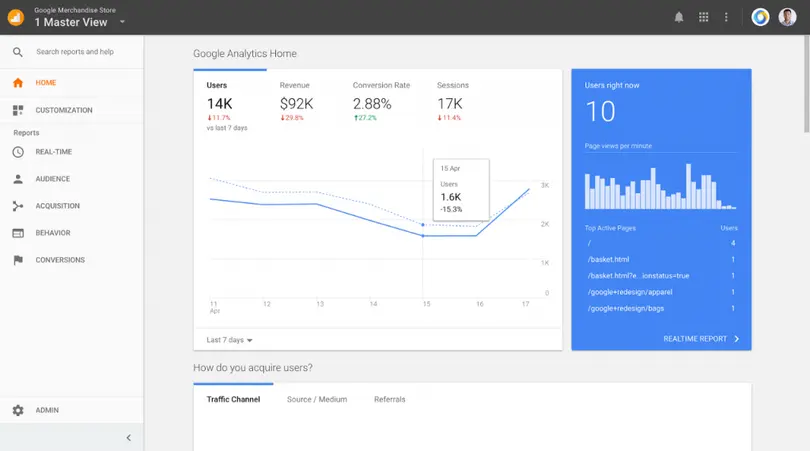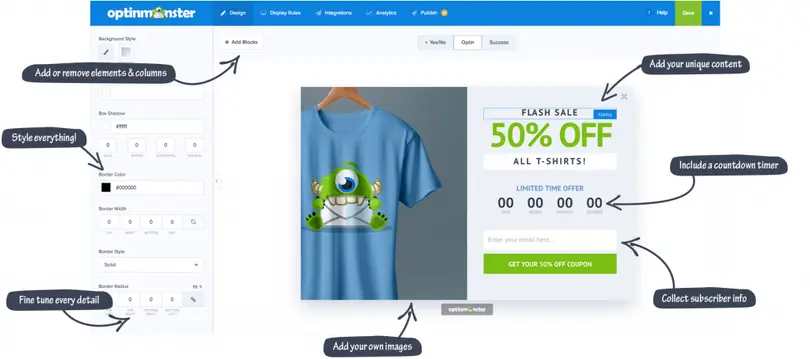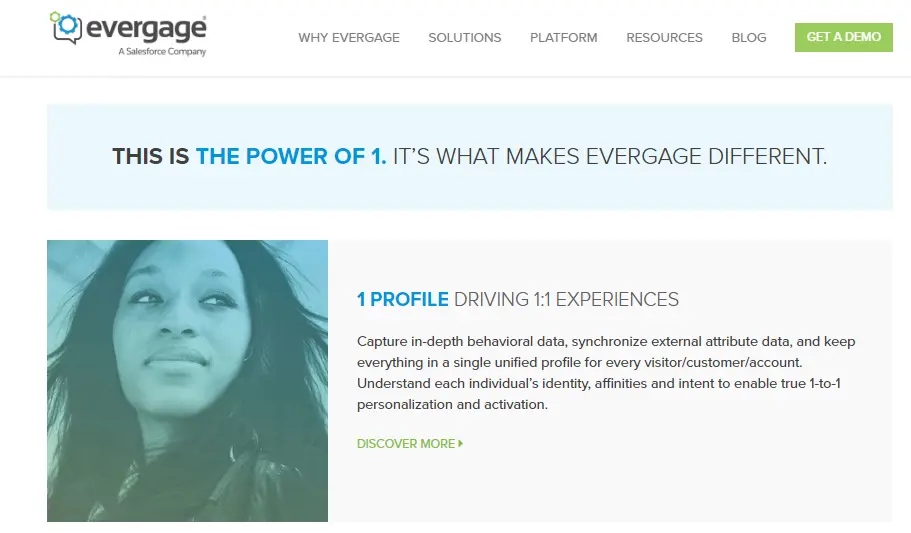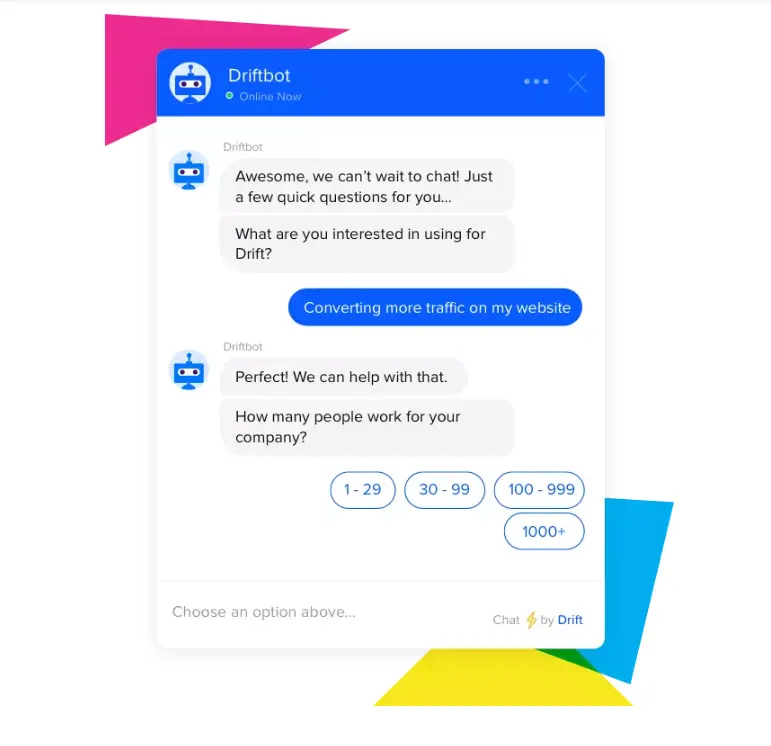There’s a good chance you’ve heard of a "personalization strategy" in the marketing world. In simple terms, it’s about personalized communications and experience for your ideal customers. Your goal is to use data to better understand your ideal audience, allowing for the creation of impactful marketing experiences that drive results. While this isn’t a far stretch from what most marketers understand about the practice of marketing, it’s a little more scientific.
Should you care about personalization? Good question. Over the years, we’ve seen an overwhelming amount of evidence in support of more personalized marketing experiences. Here are six stats that show personalization is happening and more is needed:
- 66% of marketers are realigning internal resources to drive more personalized marketing initiatives. ( Conversant Media)
- Almost two-thirds of CEOs identified the need for products, services and experiences that are more meaningful to their customers as important. (Accenture)
- 4% of customer insights and marketing professionals from multiple industries cite personalization is “important,” “very important,” or “extremely important” for achieving their current email marketing objectives. (Conversant Media)
And customers have also weighed in on the importance of personalization:
- 72% of consumers claim they will only engage with personalized messaging. (SmarterHQ)
- Half of Millennials and Gen Zers generally ignore communications from companies that don’t personalize their content, and 73% expect companies to engage them in real-time. (Salesforce)
- 75% of consumers are more likely to buy from a retailer that recognizes them by name, recommends products or services based on past purchases, or knows their purchase history. (Accenture)
While we could share more hard-hitting evidence that brands and consumers want a more personalized marketing experience, these stats do a solid job. They indicate that businesses are far more conscious of the need to cater to the unique needs and interests of their customers, while consumers want to be able to find more of what they want with less effort and enjoy the process.
What is a Personalization Strategy?
Personalization Strategy is More Scientific
When developing your personalization strategy, you need certain key elements that will guide your decisions. For example, marketers the world over are familiar with personas but few know how to make them work for their brands. Often, personas are developed to later be abandoned. The outcome, messaging and experiences that leave buyers feeling less than enthusiastic about committing to brands.
This is where a scientific approach comes to the rescue. Personalization strategy is about combining what you know about your audience through the development of personas, with quantitative and qualitative data to form stronger assumptions about how to best market to your audience.
How do you bring it all together? In the blog post, we’ll share a basic framework for what your personalization strategy should include. We’ll look at how to leverage your personas and introduce a simple yet effective tool to elevate the experiences you create for your audiences. We’ll also look at the technology you should be using and how to use it, and wrap up with how to pull it all together.
What You Need to Create a Personalization Strategy
Well-defined Personas
Personas have long held a special place in the hearts of brands. And by all means, they should. When developed correctly, they become the perfect reference point for all communications and marketing strategies any brand develops. But often, brands stumble. They lose track of who they are marketing to, why, and what their audience really wants.
Here are a few best practices to head when using personas to keep your brand on the straight and narrow:
Speak to your audience
Sure, you could build a persona based on online research, but that’s secondary and sometimes tertiary information at best. What you come across may often be skewed and altogether irrelevant for your audience. The only way to get ahead of the pack is by using primary research. Speaking to your audience is the best way to learn as much about them as possible. While we won’t go into the details of what your persona should include, we’ll gloss over the basics of the often neglected aspect of personas: psychographics.
You need to get a good sense of what drives your audience. Is there more than one type of buyer that you are catering to? What are their values and what matters most to them? What desires, needs, challenges and pain points do they experience en-route to discovering and later purchasing what you have to offer? Demographics aside, answering the above questions will give you an unprecedented level of insight into who you’re marketing to and what really moves them to make decisions.
Go Deeper With the Before and After Grid
So, you’ve got your persona document ready, and you know what moves your audience. Now what? Developing powerful and effective customer experiences can only happen when you apply what you’ve learned about your audience. For most marketers, connecting the dots between where their customer is and where their customer wants to be is challenging. They simply don’t know how to identify the right levers to pull or know what that looks like.
The Before and After Grid helps address this problem. DigitalMarketer introduced it to guide the experiences that marketers offer their customers. It’s based on the concept of understanding what state your buyer is in before and after they come across your brand and product. The grid automatically helps connect the dots on the way to the purchase. What’s more, it accounts for the psychographic factors that influence buying behaviour. If you haven’t yet, learn more about the grid from DigitalMarketer.

Image via digitalmarketer.com
Technology
Today, it’s impossible to build any sort of marketing campaign with MarTech. From CRMs to simple webforms and tracking software, tech is an essential part of delivering strong and results-driven marketing.
What Are You Using
While there are a myriad of software options available, you only need enough technology to help you better understand your audience. Here’s a list of basic personalization software solutions that will help.
Analytics Software
Analytics software helps you gauge how users interact with your site and assets. The most common and free option out there is Google Analytics. You can track everything from dwell time to pages visited and also set goals based on funnels and track how effective your campaigns are at generating ROI.

Image via Patrick Strickler
Opt-in Software
Opt-in software is ideal for quickly gathering visitor information. It can also be used to make spot offers and gauge user interest in products, offers and services. For example, OptinMonster offers exit intent pop-up messages designed to drive conversions. If you have a Shopify store, you can integrate OptinMonster with Shopify to create compelling offers for shoppers.

Image via OptinMonster
Customer Segmentation
A key aspect of delivering timely and personalized messages is the ability to know who should receive them and when in the buyer’s journey. Segmentation software helps you create personalized marketing campaigns and experiences. For instance, Segment helps you categorise and sort customers based on their web traffic. It accounts for the different paths they’ve used to get to your site or landing pages and allows you to tailor offers based on their behaviour.
A/B Testing
Marketers aren’t strangers to A/B testing. And for personalization strategy, A/B testing can be as complex or simple as you’d like. Typically, you want to test everything from colors, copy, and graphics, to offers and pricing. The complexity is born in the level of split testing you'd like to deliver (think upsells, cross-sells and down-sells). Evergage, for example, is software built to help B2B companies create personalized marketing experiences. It offers real-time A/B split testing and is powered by machine learning.

Image via Everage
Live Chat
Live chat isn’t a new concept but bot-powered chat is relatively new. It’s fast-becoming the sales force brands need to drive conversions. Tools like Drift allow you to gather information in a friendly and convenient fashion. They also allow you to qualify (and disqualify) leads, then connect them with a sales representative to move the sale along.

Image via Drift
Analyze Audience Data
Building a powerful personalization strategy requires constant customer data analysis. Here’s a look at the various types of data you should be looking at to improve your marketing campaigns.
Behavioural Attributes
These relate to past behaviour of your visitors and customers. Look for how they use your site, where they come from, what they click on, how long they are on your site for, which terms they use when searching for content or products on your site, and more.
Contextual Attributes
Contextual data will help you understand the environment visitors use to access your offers. This includes the types of device (mobile, desktop or tablet), their operating systems and browsers. It also includes details like the time of day they visit your site and which promotions they’ve accessed. Together, this information can be used to tailor highly-targeted and personalized campaigns.
Demographic Attributes
Demographic attributes are gathered from your analytics software. These should include geographical information, gender and age. Depending on how visitors have interacted with your brand, you can also gather income and age information.
Messaging Matrix
Once you’ve identified a direction, you’ll need to support it with the right messaging to drive results. A messaging matrix is a document designed with messaging that engages and resonates with various personas you’re targeting. For more on how to create one, visit this blog post.
Your messaging will also include symmetric messaging. Symmetric messaging is designed to help visitors feel more connected to the destination they’ve arrived at. A typical example where symmetric messaging is important is when running paid ads. Often referred to as ad scent, the connectedness or relation between the offer made in an ad and the design (copy, colors and imagery) on a landing page influences how effectively an offer converts.
Retargeting
Retargeting is a powerful means for driving conversion. It’s best used when you’ve gathered enough data to offer personalized experiences. Data you gather can include previous product purchases to inform offers buyers may be interested in, or destinations on your site that have been visited that can be used as reference points for tailored content.
In Closing
Personalization strategy is just that, strategy. For it to work, you’ve got to take action. While much of your strategy will be born in data and analysis, you can only derive what’s really working by testing your hypothesis and refining your approach. That said, having a strategy is also the only way to know how to generate results. Without a strategy, a brand is like a rudderless ship at sea.



